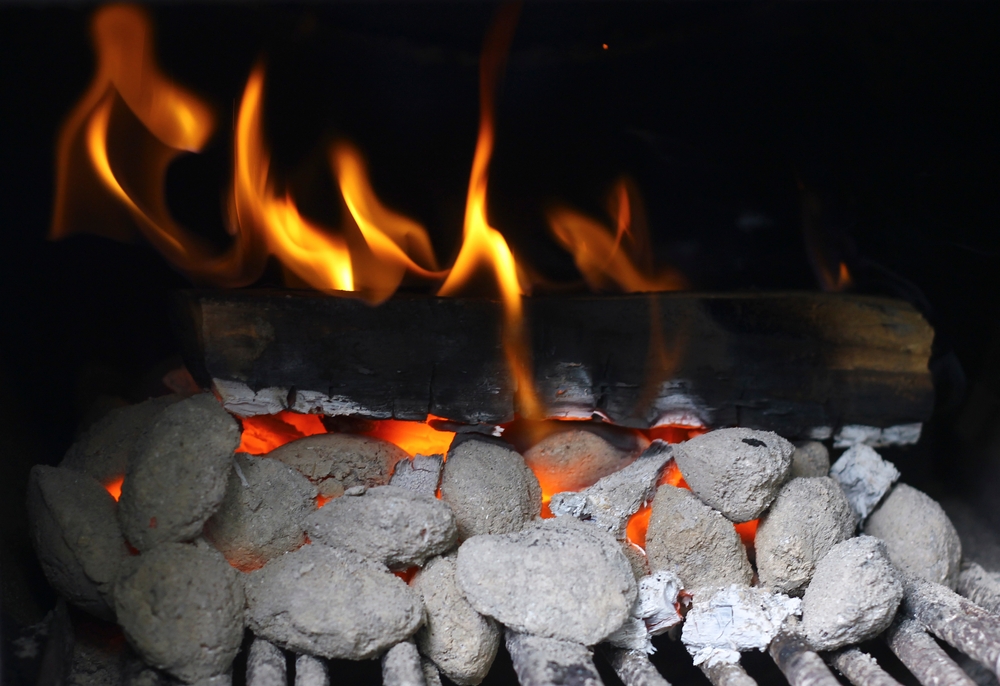One of the most difficult components of smoking meat to master is controlling the fire in an offset BBQ Grill. This article will teach you how to build and manage a fire in an offset grill.
An offset smoker is a type of barbecue smoker that consists of a horizontal cooking chamber and a firebox attached to one side. The firebox is where the wood or charcoal is burned, and the smoke and heat travel through a vent or a pipe to the cooking chamber, where the food is placed on racks. The offset smoker allows for indirect cooking, which means the food is not exposed to direct flames, but rather to hot smoke that circulates around it.
One of the most important skills for using an offset smoker is how to manage the fire. A well-managed fire will produce a steady temperature, a clean smoke, and a delicious flavor for your food. Here are some tips on how to manage a fire in an offset smoker:

Choose the right fuel
The type and quality of fuel you use will affect the temperature, the smoke, and the flavor of your food. You can use either wood or charcoal, or a combination of both, depending on your preference and availability. Wood will produce more smoke and flavor, but also more ash and creosote, which can clog the vents and affect the airflow. Charcoal will produce less smoke and flavor, but also less ash and creosote, and it will burn longer and more consistently. You can also add wood chunks or chips to charcoal to enhance the smoke and flavor. The best woods for smoking are hardwoods, such as oak, hickory, mesquite, apple, cherry, or pecan. Avoid softwoods, such as pine, fir, or cedar, as they will produce a bitter smoke and can contain harmful resins.
Start the fire

To start the fire, you will need some kindling, such as newspaper, cardboard, or dry twigs, and some lighter fluid or a chimney starter. Place the kindling in the firebox and light it with a match or a lighter. Once the kindling is burning, add some charcoal or wood to the firebox and let it catch fire. You can use lighter fluid to help ignite the charcoal or wood, but be careful not to use too much, as it can leave a chemical taste on your food. This method is frowned upon in the BBQ world.
Alternatively, you can use a chimney starter, which is a metal cylinder with a handle and a grate at the bottom, to start the charcoal or wood. Fill the chimney starter with charcoal or wood and place it on a heat-resistant surface. Light some newspaper or cardboard at the bottom of the chimney starter and let the fire rise to the top. Once the charcoal or wood is glowing, dump it into the firebox.

You can also use a torch to start your fire. I’ll admit this is my favorite method. Just light the torch and let the flame from the torch do the work
Control the temperature

The ideal temperature for smoking is between 225°F and 275°F, depending on the type and size of the food you are cooking. To control the temperature, you will need to adjust the vents and the amount of fuel you add to the firebox. The vents are openings on the firebox and the cooking chamber that allow air to enter and exit the smoker. The more air you let in, the hotter the fire will burn, and the more air you let out, the cooler the fire will burn. You can use a thermometer to monitor the temperature inside the cooking chamber and adjust the vents accordingly. Generally, you want to keep the vent on the firebox fully open, and the vent on the cooking chamber partially open, to maintain a good airflow and a clean smoke. You can also use a water pan or a drip pan inside the cooking chamber to help regulate the temperature and add moisture to the food.
Maintain the fire
To maintain the fire, you will need to add more fuel to the firebox periodically, depending on how long you are smoking and how much fuel you are using. You will also need to remove the ash and the creosote from the firebox and the vents, as they can build up and affect the airflow and the smoke quality. You can use a metal shovel or a poker to stir the fire and remove the ash and the creosote. You can also use a spray bottle filled with water or apple juice to moisten the fire and prevent it from flaring up. You should avoid opening the cooking chamber too often, as this will let out the heat and the smoke, and extend the cooking time. You should only open the cooking chamber when you need to check the food, add more water or drip pan, or baste or mop the food.
Conclusion
As with everything else in BBQ, experiment with the fuel and airflow. Learning to master the fire will save you a lot of headaches and heartaches down the line.
Please note, we may receive payment if you purchase any of the products we link to on this page.
For a listing of products, we love to use, please click here
